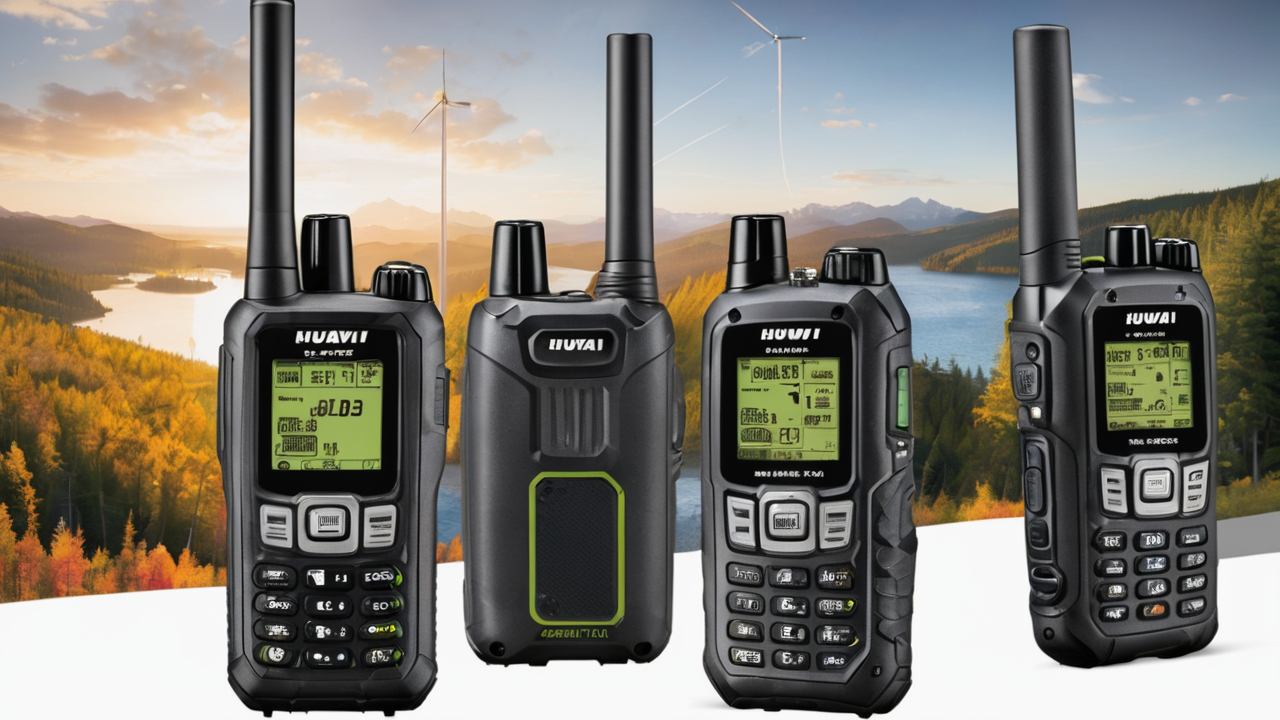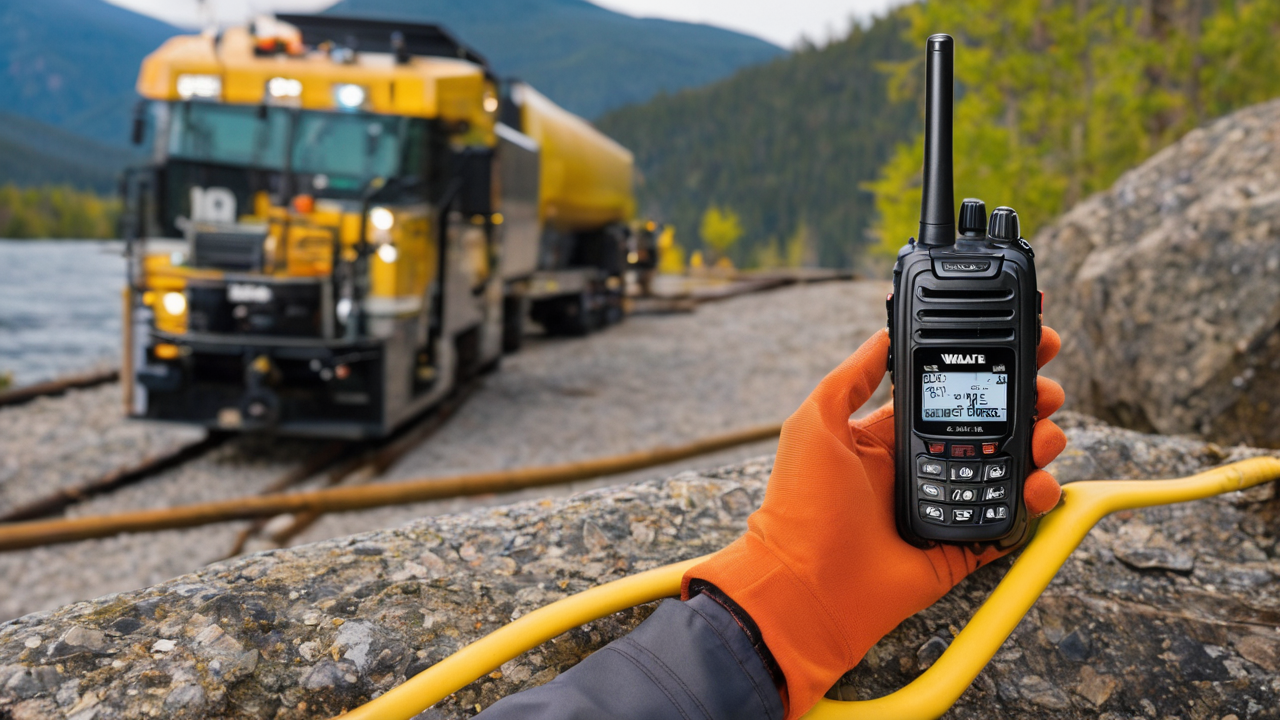Understanding the Differences: Walkie-Talkies and Two-Way Radios Explained
Key Features of Walkie-Talkie Phones
Walkie-talkie phones are portable devices that combine cell phone and two-way radio functions. They offer instant communication without dialing. These devices use cellular networks for long-range talks. They also have push-to-talk features for quick chats.

Walkie-talkie phones often have rugged designs. They can withstand drops and harsh weather. Many models are water-resistant or waterproof. This makes them great for outdoor use.
These devices usually have long battery life. They can last for days on a single charge. Some models offer GPS tracking and emergency alerts. These features add to their appeal for outdoor enthusiasts.
Key Features of Two-Way Radios
Two-way radios are standalone devices for short-range communication. They don't need cellular networks to work. This makes them ideal for remote areas with no cell service.
These radios operate on specific frequencies. Users can choose channels to avoid interference. Many models have privacy codes for secure talks.
Two-way radios are known for their durability. They're built to withstand tough conditions. Some are submersible and can float in water. This makes them popular for marine use.
These devices often have long range capabilities. Some can reach up to 35 miles in open areas. They're perfect for large worksites or outdoor adventures.
The Technology Behind Portable Communication Devices
Portable communication devices use radio waves to transmit signals. Walkie-talkie phones combine cellular and radio tech. They can switch between networks for best coverage.
Two-way radios use specific radio frequencies. These are often in the UHF or VHF bands. The choice of frequency affects range and obstacle penetration.
Both devices use different encoding methods. This ensures clear audio and reduces interference. Some advanced models use digital signals for better quality.
Power output is a key factor in these devices. Higher wattage usually means longer range. But it also affects battery life. Manufacturers must balance these factors.
Real-World Use Cases: Where Walkie-Talkies Excel and Two-Way Radios Shine
The Adventurous Outdoorsman: Walkie-Talkie Advantages
For outdoor enthusiasts, walkie-talkie phones offer unique benefits. They provide the best of both worlds. Users can make regular calls and use push-to-talk features.

These devices are great for hiking groups. They allow quick check-ins without stopping. The GPS feature helps track group members' locations. This is crucial for safety in remote areas.
Walkie-talkie phones shine in areas with spotty cell coverage. They can switch to radio mode when needed. This versatility is perfect for long treks or camping trips.
Many models have built-in weather alerts. This feature is invaluable for outdoor activities. It helps users prepare for sudden weather changes.
The Efficient Professional: Two-Way Radio Superiority
In professional settings, two-way radios often outperform walkie-talkie phones. They offer instant communication without network delays. This is crucial in fast-paced work environments.
Construction sites benefit greatly from two-way radios. They work well in areas with poor cell coverage. The devices are tough enough to withstand harsh conditions.
Security teams rely on two-way radios for clear, secure communication. Many models have encryption features. This ensures sensitive information stays private.
Event organizers prefer two-way radios for their reliability. They don't suffer from network congestion during large gatherings. This makes coordination much easier.
Emergency Preparedness: Comparing Reliability
In emergency situations, both devices have their strengths. Walkie-talkie phones can access emergency services through cellular networks. They also offer GPS location sharing.
Two-way radios excel when infrastructure fails. They don't rely on cell towers or power grids. This makes them crucial for disaster response teams.
Both devices often have long battery life. This is essential during extended power outages. Some models can even charge from solar panels or hand cranks.
For personal emergency kits, the choice depends on location. Urban areas might benefit more from walkie-talkie phones. Rural or disaster-prone areas might prefer two-way radios.
Decision-Making for the American Consumer: Purchasing Portable Communication Devices
The Impact of User Preferences on the Walkie-Talkie vs. Two-Way Radio Debate
Consumer preferences play a big role in choosing between these devices. Walkie-talkie phones appeal to those who want all-in-one solutions. They offer regular phone features plus push-to-talk.

Outdoor enthusiasts often lean towards walkie-talkie phones. They like the GPS and weather alert features. The ability to make regular calls is also a plus.
Two-way radio fans value simplicity and reliability. They prefer devices that do one job extremely well. The lack of monthly fees is another attractive point.
Tech-savvy users might prefer the advanced features of walkie-talkie phones. Others might choose two-way radios for their ease of use and durability.
Evaluating the Cost-Benefit Dynamic in the Portable Communication Market
Cost is a major factor in the decision-making process. Walkie-talkie phones often require service plans. This adds to the long-term cost of ownership.
Two-way radios have a higher upfront cost. But they don't need ongoing service fees. This can make them more economical in the long run.
The lifespan of the devices also affects their value. Two-way radios often last longer due to their simpler design. Walkie-talkie phones might need replacing sooner.
For businesses, the choice impacts productivity and communication costs. Two-way radios can reduce reliance on cell networks. This can lead to significant savings.
Regulatory Considerations for Operating Portable Communication Devices in the United States
In the US, the FCC regulates the use of these devices. Two-way radios often need licenses for certain frequencies. This is especially true for business use.
Walkie-talkie phones follow cellular regulations. They don't usually require special licenses. This can make them easier for casual users.
Some two-way radio frequencies are license-free. These include FRS and GMRS bands. But they have power and usage restrictions.
Users must be aware of local laws. Some areas have restrictions on radio use. It's important to check regulations before purchasing or using these devices.


